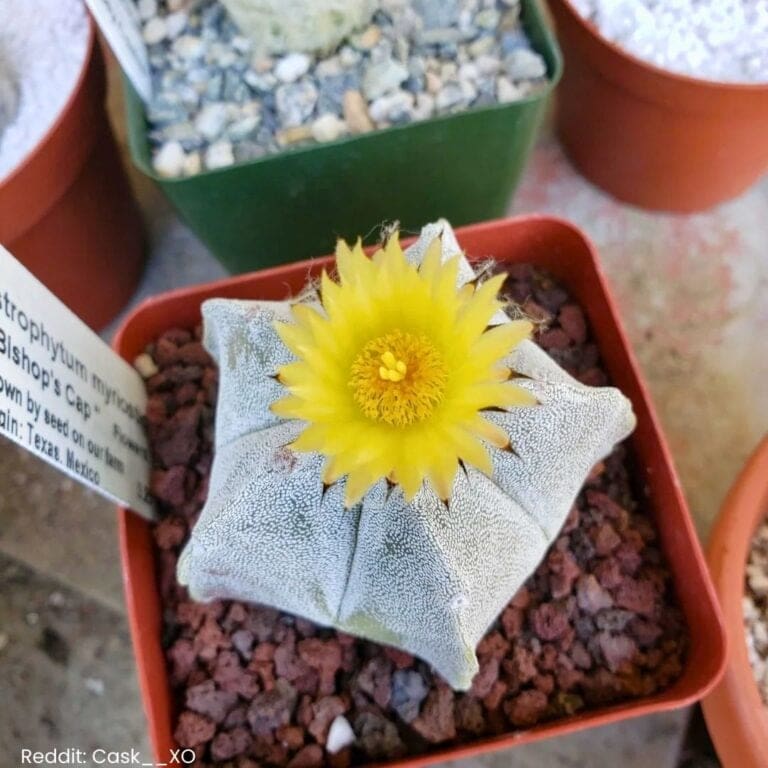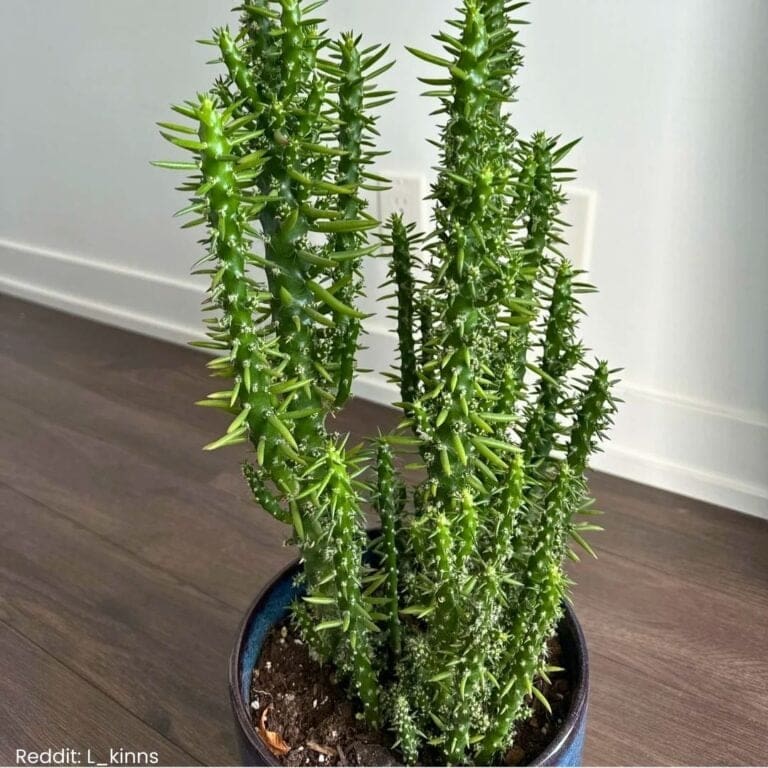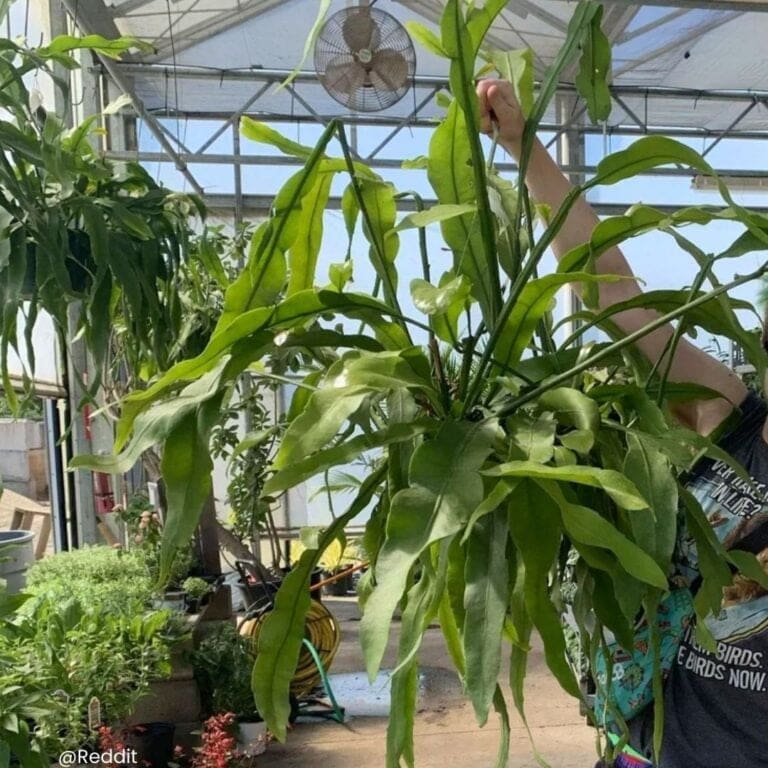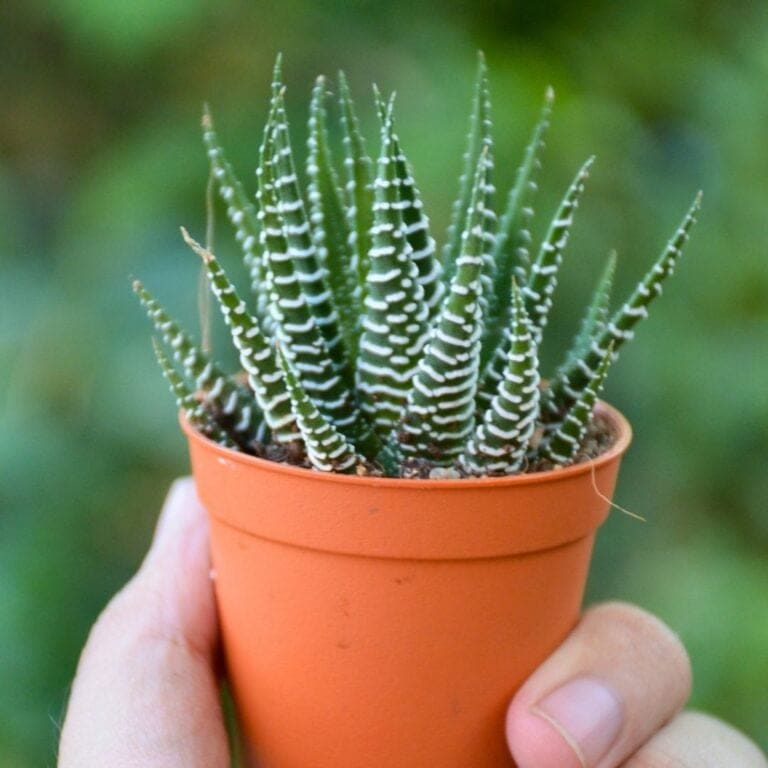Epiphyllum (Orchid Cactus) Cactus Care
So, you’ve decided to try your hand at raising an Orchid Cactus? 🌵 Great choice! These plants are not just your everyday garden variety; they bring a splash of the exotic right into your home.
I remember when I got my first one, I was amazed at how easy it was to start. These beauties thrive in indirect sunlight and need a little humidity—perfect for your bathroom or kitchen!
When it comes to watering, I keep it simple. They don’t need a swimming pool, just a nice drink when the soil feels dry about an inch deep.
Trust me, I’ve learned that less is more! Too much water is a big no-no and can lead to root rot.
So, do you have a favorite plant that’s just easy-going like this one? I’d love to hear about it! 🌿💧
One of the coolest parts of having an Orchid Cactus is watching those stunning flowers bloom. 🌸 They usually show up in spring or summer, adding a burst of color to any space.
I always get compliments from friends who visit!
Curious about how to help yours bloom at its best? Keep reading along and get set to enjoy those beautiful sights!
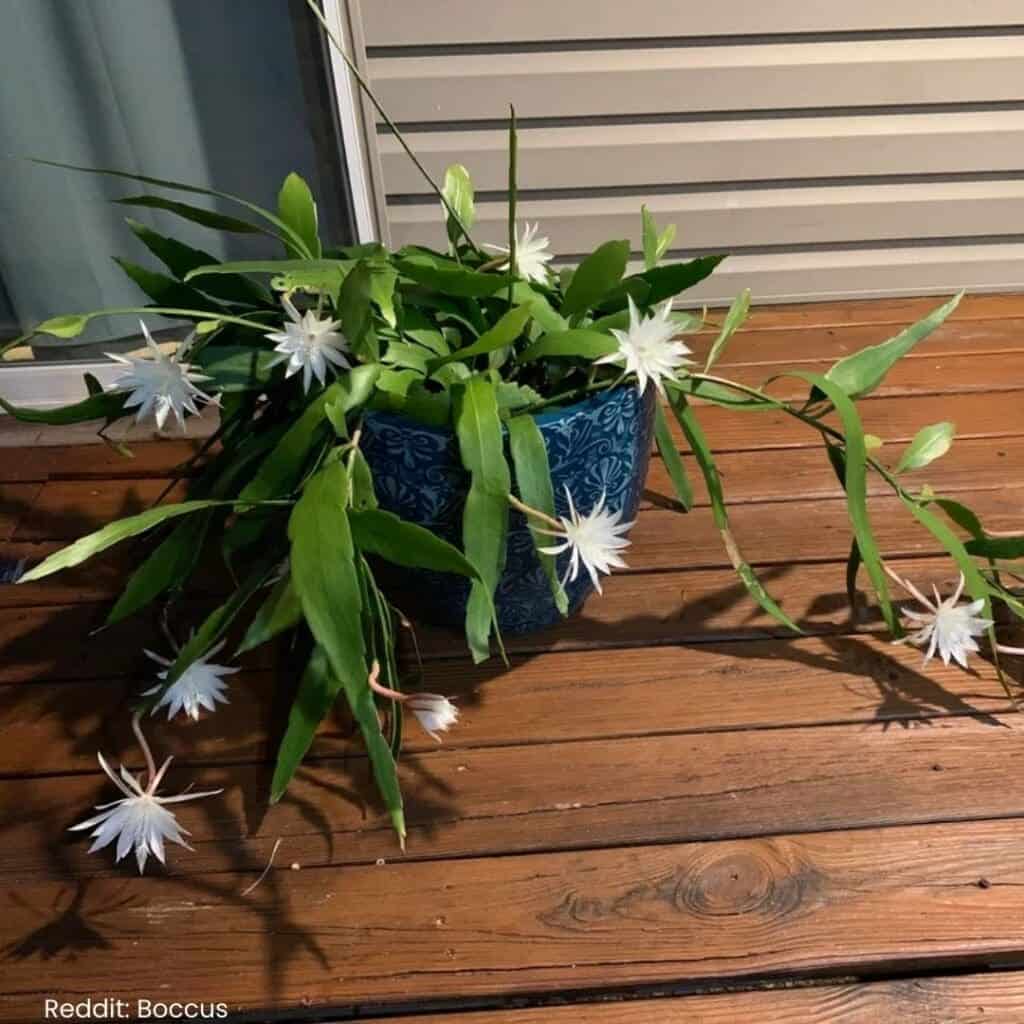
Please note: Simplify Plants is reader-supported. As an Amazon Associate, I earn from qualifying purchases made by our readers with no extra cost added to you all! Some links in the post are affiliate links and I get a commission from purchases made through links in the post.
Understanding Epiphyllum
Epiphyllums, also known as Orchid Cacti, have a fascinating history and unusual features. Let’s explore their origin, characteristics, and different varieties.
History and Origin of Epiphyllum
Did you know these cacti are originally from central and South America? They grow in the rainforests, hanging off trees just like an adventurous, green climber. 🌿 Isn’t that cool?
In the wild, they thrive by catching the rain and nutrients from the air. Their name, “epiphyllum,” actually means “upon the leaf.”
Back in the day, artists even named them the “Orchid Cactus” because of their exotic, orchid-like flowers.
It’s amazing to see how plants from such remote places are now common in our homes. I find it fascinating how they traveled from the wild to become beloved houseplants.
Where do your plants originally come from?
Characteristics of Orchid Cactus
These cacti are quite the show-off with their stunning large flowers. If you’ve ever seen one in bloom, you know what I mean. The colors are breathtaking—ranging from bright pinks to vivid reds.
Their leaves are flat and often shaped like a zigzag, kind of like Mother Nature’s own artwork.
Unlike other cacti, these guys don’t stand upright with spines. Instead, they gently droop, making them perfect for hanging baskets.
Do you ever wonder why they’re so unique compared to other cacti? 🌵 It’s like they decided to break all the rules and do their own thing.
Varieties of Epiphyllum
There are many different varieties, each with its charm. Let’s talk about some favorites.
Epiphyllum oxypetalum, or the Queen of the Night, is famous for its sweet perfume and midnight blooms. 🌙
Then there’s the Epiphyllum anguliger, which people love for its unusual leaf shapes — often called the fishbone cactus.
Another stunning variety is Epiphyllum crenatum, known for its wide blooms.
Each variety brings something special to your home. Which one would you like to add to your collection? Maybe start with one and see how they brighten up your space! 🤩
Essentials of Epiphyllum Care

Caring for Epiphyllum, or Orchid Cactus, can be a joyful experience! These unique plants flourish when given the right light, water, temperature, soil, and nutrients.
Let’s break down the essentials for taking care of your spectacular cactus buddy to make sure it stays thriving and beautiful. 😊
Light Requirements
When it comes to light, Epiphyllums prefer bright, indirect sunlight. Direct sunlight can scorch their leaves, so it’s best to place them near a window with filtered light.
You could also use sheer curtains to diffuse the direct rays. If you notice the leaves turning yellow, it might be getting too much sun.
A little tip: During the winter months, I like to move them closer to the light source because the sun is less intense.
Are you wondering if artificial lights work? Yes, they can! Grow lights can be a great substitute if natural light isn’t perfect in your home.
Watering Techniques
Watering your Orchid Cactus correctly is key to keeping it healthy. The soil should be kept moist but not soggy.
Overwatering is a big no-no, as this can lead to root rot. I generally wait until the top inch of soil dries out before watering again.
In the winter, I water less since the plant isn’t growing as fast.
Remember to always use a pot with drainage holes to prevent standing water. 🍶
A helpful kind of question might be: Do you find yourself forgetting to water? Setting a schedule can really help!
Ideal Temperature and Humidity

The right temperature and humidity levels are crucial for your cactus’s comfort.
Epiphyllums love a warm environment, ideally between 60-75°F (15-24°C). They can tolerate cooler temps, but only briefly. Anything below 50°F (10°C) might stress them out.
Fun fact: These guys are tropical! Extra humidity is awesome for them.
You can boost humidity by placing a tray of water near the plant or using a humidifier.
Do I hear your cactus thanking you already? 🌴
Soil and Repotting Needs
Epiphyllum cacti thrive in rich, well-draining soil. I use a special cactus mix combined with a bit of orchid bark or perlite to ensure proper drainage. This prevents water from accumulating at the roots, which is vital.
Repotting should be done every couple of years or when the plant outgrows its pot. Spring is the best time for this task.
Remember to choose a pot that isn’t too big. A snug pot encourages blooming, and who doesn’t love more flowers? 🌸
Fertilization Schedule
Feeding your Orchid Cactus is like giving it a treat!
I use a balanced, water-soluble fertilizer every month from spring through summer. Be cautious not to over-fertilize, as this can harm the plant. A little goes a long way.
During the fall and winter, I let my plant rest and skip the feedings. This downtime helps it prepare for the blooming season.
🌺 Have you planned your Orchid Cactus feeding schedule yet? This simple routine keeps it energized and ready to dazzle!
Pruning and Maintenance

Taking care of Epiphyllum, also known as Orchid Cactus, involves regular pruning and maintenance.
Pruning helps the plant grow healthily and keeps it looking great. After blooming, the plant may need extra care to stay strong and vibrant.
How to Prune Epiphyllum
When it comes to pruning my Epiphyllum, I always make sure I use clean, sharp tools. Dead or damaged stems need to be trimmed to prevent any disease and promote healthy growth.
I like to cut back to the base or just above a new leaf joint. Remember, less is sometimes more. 🪴
For those unfamiliar, the cactus will benefit from a tidy-up in late winter or early spring.
By cutting away some of the older growth, I help the plant focus its energy on new shoots.
Oh, and watch out — those stems are quite chunky! A slight trim will do wonders.
Caring for Epiphyllum After Blooming
Once my Epiphyllum finishes blooming, I find it’s a good time to give it a bit of TLC.
This means checking for any faded flowers and gently removing them. This keeps the plant tidy and focuses energy on the next blooms.
I usually reduce watering a bit during this period too. 💧
I also make sure the soil is well-draining to avoid waterlogging.
I observe the leaves closely; if they start wilting, I adjust their care as needed. Bright but indirect light seems to work wonders!
If you’ve got any tips or questions about orchid cacti, I’d love to hear them! 🌸
Propagating Epiphyllum

Growing new Epiphyllum from cuttings is pretty simple! You just need a healthy parent plant and some basic tools. Get ready to make your plant collection grow! 🌵
Propagation Techniques
You’re probably wondering how to convince that cactus to multiply.
First, get a healthy stem around 6-8 inches long. Make a clean, angled cut using a sharp knife or scissors. Let the cutting dry and heal for a couple of days. This prevents rot when it hits soil or water!
When it’s ready, pick your rooting method.
You can use soil, water, or even a mix.
Soil’s classic: plant the dried cutting in a pot with well-draining cactus soil. Keep it in indirect light and don’t water until roots form—patience is key!
Water propagation is fun, too. Place the cutting in water, but not fully submerged. Just dip the end, like toes in a pool! Change the water weekly and wait for those roots!
Have you tried these methods before? 🤔
Rooting Epiphyllum Cuttings
Let’s get those roots going!
For soil propagation, check the cutting in a couple of weeks. Give it a gentle tug. If it resists, roots are forming—yay! Wait a bit longer if it still comes out easily.
With water rooting, look for tiny roots. Once they’re a few inches long, they’re ready for dirt.
Make sure to introduce rooted cuttings to soil gently.
Use a small pot with a cactus mix. Bury the roots, leaving the top stem above soil.
Water lightly and place it back in filtered sunlight.
Keep an eye on new growth. Your cutting could soon be part of a healthy collection!🌱
It’s like plant magic happening right before your eyes. Have any questions about this process? 😊
Common Pests and Diseases

Taking care of orchid cacti can be quite rewarding, but like all plants, they face their fair share of pests and diseases.
Let’s look at how to spot these pesky problems and how to deal with them effectively. 🌵😊
Identifying Pests and Diseases
Ever spotted something strange on your cactus?
Common pests like mealybugs, aphids, and spider mites can be little troublemakers. Mealybugs look like small white cotton patches, while aphids appear as tiny green or black bugs on the stems. Spider mites might leave yellowing spots and fine webbing.
Diseases also lurk around if we’re not careful.
Watch out for root rot, which happens when the roots get too soggy. If you see your plant turning yellow or wilting, it could be root rot. Cercospora leaf spot is another issue, leaving dark spots on the leaves.
Prevention and Treatment
Let’s talk about keeping these bad guys at bay! 🦟
To prevent pests, keep your cactus in a clean environment. Wipe the leaves gently with a damp cloth and inspect regularly.
If you find pests, insecticidal soap or a mix of water and dish soap can help kick them out.
For diseases, proper watering is my best friend.
Make sure the soil drains well and don’t overwater. Root rot hates well-drained soil! 🍃
Trim any infected leaves and make sure your cactus gets enough sun.
Want to keep your cactus healthy and happy? Keep up with these tips, and you’ll do just fine! 🌿
Troubleshooting Epiphyllum Care

Keeping your Epiphyllum (Orchid Cactus) healthy can be tricky if it’s not flowering or if the leaves seem off. 🌵 Here’s how to tackle these common issues with some quick tips and tricks to bring your plant back to its best.
Dealing with Non-Flowering
It’s so disappointing when your beloved orchid cactus doesn’t bloom, right?
First, let’s check the light. Is it bright enough?
These plants love bright, indirect light. Too much shade might hold back their blooms. 😕
Next, consider their feeding schedule. Are you using fertilizers during the growing season? A balanced mix helps! Plus, they appreciate a little rest during winter. 💤
Water, of course, is crucial, too. Are you letting the soil slightly dry between waterings? Too much water can stress them out. Try alternating your approach to see happy blooms on your Epiphyllum.
Managing Leaf Problems
Leaf issues can be a bummer!
Yellowing leaves often signal overwatering. Make sure to let the top inch of soil dry out before watering again. Are they too soggy? 👀
Brown or crispy edges might mean sunburn. Remember to keep them away from direct sunlight. It’s like leaving them outside on a hot day without sunscreen—ouch!
Any pests lurking around? Sometimes little critters enjoy the leaves, too. Do a quick check. If they’ve moved in, a gentle wash with soapy water can help send them packing.
Remember, it’s all about keeping their environment comfy and safe.
Displaying Your Epiphyllum

When I think about showing off my Epiphyllum, I want to consider where to place it for maximum impact and health. Potting options and creative designs really help show my cactus’s beauty.
Potting and Hanging Baskets
I love to use hanging baskets for my Epiphyllum. They let those long, arching stems hang freely and create a stunning display. Plus, they save space if you’re like me and have too many plants already! 😉
Choosing the right pot is key—something with good drainage to keep the roots happy.
Terracotta pots are a solid choice. They’re breathable and help prevent root rot. A hanging basket with a simple macramé hanger adds a touch of boho flair.
I try to find a spot with indirect, bright light to keep those blooms happy. Too little light, and they might not flower like I want them to.
Creative Display Ideas
Getting creative makes it so much fun!
Have you thought about using a vertical garden? It’s a fancy way to let my Epiphyllum grow and show off without taking up floor space. 🏡
It makes the balcony or living room pop, and it’s like I have a living artwork. I can also place several varieties together for a burst of color.
Some people even use old ladders or shelves. I like decorating with these because it’s both functional and artsy. 🌵
Do you have any cool items lying around that could be used? A vintage birdcage or even an old chandelier without the lights can make an intriguing plant holder! Creativity is key when showing off my favorite cactus!
Seasonal Care Adjustments
Caring for Epiphyllum cacti is like preparing for a seasonal wardrobe change! 🌿 Let me guide you through it.
Spring: Time to wake your cactus up! Increase watering as the days warm up. Think of this season as giving your plant a nice, refreshing drink. ☀️
Summer: Your cactus will be thirsty.
Water regularly, but don’t let it sit in water—nobody likes soggy feet!
Keep it in a spot with bright, indirect light.
Does your cactus look comfortable with its sunbathing spot? If it looks a little too hot, move it to a shadier place. 😎
Fall: Gradually reduce watering as temperatures drop.
It’s like slowing down after a fun summer of adventures.
This prepares the cactus for its winter rest. Keep checking the soil; we don’t want any surprises!
Winter: It’s time for a nap! 🌙
Think of this like the cactus’s winter hibernation.
Water sparingly.
Place your cactus in a cooler spot indoors, away from drafts.
Do you notice the leaves looking a bit tired? That’s okay; it’s their rest time.
Got any questions? Feel free to drop me a message. Gardening is more fun when we learn together! 🌵✨
Frequently Asked Questions
Taking care of an Epiphyllum orchid cactus can be simple if you know a few key things. Let me share some tips on watering, indoor and outdoor care, overcoming common problems, post-flowering care, and propagation. Let’s keep your cactus thriving! 🌵
How should I water my Epiphyllum orchid cactus to ensure proper care?
I water mine when the top inch of soil feels dry. Overwatering can lead to root rot, so it’s best to check the soil first.
During the growing season, I water once a week and reduce it in the winter.
Do you use rainwater for yours? It’s a great idea! 💦
What are the best practices for caring for an Epiphyllum orchid cactus indoors?
I place mine in a spot with bright, indirect sunlight. A room with a south-facing window works wonders.
I also make sure the humidity is right by misting the air or using a humidifier.
How do you handle indoor humidity?
Can you provide tips for taking care of an Epiphyllum orchid cactus outdoors?
When I keep my cactus outside, I choose a shaded area to prevent leaf burn.
Protecting it from heavy rain is crucial, so I use a covered porch or patio.
Have you tried using a pot to move it around? It’s super practical for changing conditions! 😎
What common problems may arise with orchid cacti and how can I address them?
Sometimes my cactus gets brown spots from too much sun, so I move it to a shadier spot.
If it’s not flowering, I check for proper lighting and feeding.
Let’s not forget about pests like spider mites! A gentle soap spray or neem oil helps me tackle them.
How do I care for my Epiphyllum orchid cactus after it has finished flowering?
After the flowers fade, I trim dead blooms and reduce watering slightly. Fertilizing with a balanced mix helps prepare them for the next season.
Do you give yours a little extra TLC, too? 😊
What steps are involved in propagating an Epiphyllum orchid cactus?
For propagation, I cut a healthy leaf and let it dry until a callus forms. Once it’s ready, I plant it in a sandy cactus mix.
Keeping the soil lightly moist, not soggy, helps new roots to form.
Have you tried propagating any other plants? It’s a fun adventure! 🌱
Recommended Garden Supplies
| Product Image | Our Recommended Gardening Supplies | Check Offers! |
|---|---|---|
Top Top
Top
Top
Top
Top
Top
Top
Top | rePotme Houseplant and Tropical Classic Potting Soil Mix | Check Offer On Amazon |
 Top
Top
Top
Top
Top
Top
Top
Top | Espoma Organic Indoor Plant Food | Check Offer On Amazon |
 Top
Top
Top
Top
Top
Top
Top
Top | GooingTop LED Grow Light 6000K Full Spectrum Clip Plant Growing Lamp | Check Offer On Amazon |
 Top
Top
Top
Top
Top
Top
Top
Top | Soil Moisture Meter | Check Offer On Amazon |
 Top
Top
Top
Top
Top
Top
Top
Top | Govee Hygrometer Thermometer, Bluetooth Enabled! | Check Offer On Amazon |
 Top
Top | LEVOIT Humidifiers for Large Room(Best For Plants) | Check Offer On Amazon |
 Top
Top
Top
Top
Top
Top
Top
Top | Upgraded DIY Automatic Drip Irrigation Kit, 15 Potted Houseplants Support | Check Offer On Amazon |
 Top
Top
Top
Top
Top
Top
Top
Top | Stainless Steel Heavy Duty Gardening Tool Set | Check Offer On Amazon |
 Top
Top
Top
Top
Top
Top
Top
Top | Bonide Insecticidal Soap | Check Offer On Amazon |
 Top
Top
Top
Top
Top
Top
Top
Top | Bonide 32 oz Spray Neem Oil for Organic Gardening | Check Offer On Amazon |
 Top
Top
Top
Top
Top
Top
Top
Top | Garden Safe Fungicide | Check Offer On Amazon |


